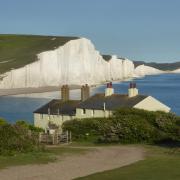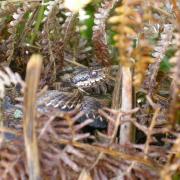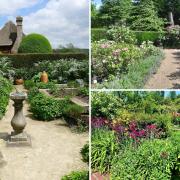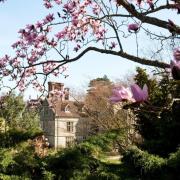The Caribbean island of Grenada is a haven for foodies as well as sun-worshippers

Who could resist a small island surrounded by turquoise sea with miles of unspoiled beaches and a blissfully warm climate all year round? Add to this a central area of lush mountainous rainforest, a bustling capital city in St Georges which has been described as the prettiest town in the Caribbean, and some of the friendliest people you could hope to meet – and you have the recipe for a great holiday destination.
It is indeed a great place to chill out on the beach with a rum punch in hand, but there are plenty of activities for the more energetic. The surrounding blue waters offer excellent sailing, scuba diving and snorkelling – there is even an intriguing underwater sculpture gallery. The central mountainous Grand Étang National Park is made up of protected rainforest crossed by numerous hiking trials. There are sparkling waterfalls and opportunities to indulge in the latest craze, river tubing – basically hurtling along the river in a glorified rubber tyre, which takes place at the Balthazar Estate near Glenville.
There is a very good bus service which will take you all over the island – and for an extra dollar or two the driver will divert to drop you at your destination – no-one minds. The two neighbouring islands which make up the tri-island nation, Petite Martinique and Carriacou where an exciting regatta takes place, are accessible by day on a ferry or small plane.
Grenada is incredibly fertile and productive so there are old rum distilleries and plantations producing cocoa and spices to visit. The plantations began to collapse when slavery was abolished but Belmont Estate now operates as a busy agri-tourism attraction. A few of the very old ones like the Dougaldston Estate, south of Gouyave continue to limp on and there visitors can see the boucan where cocoa beans are still dried and watch the women separating the lacy membrane known as mace from the nutmegs. At Gouyave too, is one of the nutmeg pools where farmers bring their nutmegs for processing. This industry, on which the island depends, was dealt a near fatal blow by a hurricane 10 years ago but is gradually recovering. There are also several private gardens open to the public where wonderful plants including vivid red and yellow heliconias, huge torch gingers, exotic orchids and bromeliads grow freely and the scent of spices fill the air.
The bounty of the seas and the amazing ease with which vegetables, spices and fruit grow means that there are plenty of treats in store for foodies. The ethnic mix of the population, who are mainly of West African descent with a small percentage of Indian, French and British, has resulted in a unique traditional cuisine. Add to this a high number of skilled chefs operating in a range of establishments and the result is something to please every taste.
One of the best restaurants on the island is The Gary Rhodes at The Calabash Hotel. The dining room is entrancing with hundreds of white Thunbergia vine flowers suspended airily over the tables and music playing gently in the background. The menu concentrates on fresh fish and local produce. Spice Island Beach Resort’s Oliver’s Restaurant offers a similar great dining experience.
These are two of the top-end restaurants but in Grenada there are many more local, homely and less expensive gastronomic establishments serving interesting specialities. One such is crab backs. These are land crabs which you see scurrying back into their holes in the sandy grass at dusk. The flesh is cooked with spices, herbs and vegetables, put back into the shell, dusted with breadcrumbs and then baked. Delicious! The place to sample them is BB’s Crab Back on the waterfront in St Georges. The exuberant owner Brian spent many years running his own restaurant in Ealing before “coming home”.
Another good way of tasting a whole range of local dishes is at Patrick’s Home Style Cooking on Lagoon Road, St Georges. Here the meal consists of some 20 little tapas-like plates. Amongst the traditional dishes we tried was the famous dasheen soup which is made from the leafy part of the popular staple, a tuber known as calalou. We also sampled lambie, the flesh of another local favourite, the conch shell, as well as fried jacks, rice and peas in coconut cream, stir-fried rabbit and the traditional speciality, “oil down,” a rich one-pot stew of “provisions” (i.e. root vegetables) cooked together with meat or salt fish, spices and coconut milk. It tastes much better than its name suggests.
Another community event held at the little town of Gouyave is Fish Friday. Food stalls are set up all along the street and as night falls every sort of fish and seafood is served to an appreciative crowd of locals and tourists. With musicians playing pans and the rum flowing, a good time is had by all. A similar, even more local event is the monthly Victoria Sunset Food Fest held on the last Saturday of each month slightly to the north. Held in aid of the local community, you will find Grenadian cuisine made with local ingredients.
www.grenadagrenadines.com--------------------------------------------------
Read on
Quirky places to stay in SussexTop tips on planning a trip to London



























